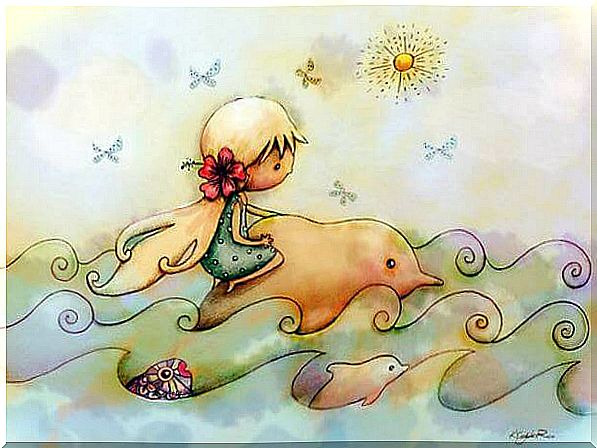6 Emotionally Appropriate Responses We Can Give Children

Regardless of how children are, it is extremely important to give emotionally appropriate responses to negative comments they make about themselves. Thus, especially when they talk about them in the first person, they usually suggest what level of perceived self-efficacy they have.
In other words, we cannot ignore that everyday comments such as “I can’t”, “I’m going to do it wrong”, “it doesn’t make sense” or “I’m going to be ashamed”, “there is nothing interesting to do” , they have an important background. which can be a reflection of low self-esteem.
Knowing how to solve these situations helps us to build a healthy affection and a reflective ability that is imposed as a priority from the earliest childhood. Thus, considering the importance of never denying a feeling, we can use a series of responses that make them rethink such harmful statements. Let’s see some examples:

1. “I can’t do it”, the jewel in the crown
We say that “I can’t do it” is the jewel in the crown because a large part of us have it included in our internal dialogue (sometimes even external), from a very young age.
This is a wildcard phrase that denotes tiredness, lack of energy, apathy, and low self-confidence. We usually respond with a “yes you can” , sometimes accompanied by the horrible taglines such as “don’t talk nonsense” or “don’t be lazy”.
How can we help them to question that thought and that attitude? In the first place, note that many times the best way to do this is to answer them with questions such as:
What does “I can’t” mean ? What proof do you have that you really can’t? How do you know you can’t if you don’t try hard enough? Do you think saying “I can’t” hurts or helps you? Don’t say “I can’t”, say “it’s hard for me but I can.”

2 I don’t feel like doing it, I’m not going to do it
The reluctance and disinterest in certain tasks become the norm at certain times. It can be frustrating, but you must understand that there are activities that you have to do for your good.
The way to encourage them to question this is by sending them the following message: don’t say “I don’t feel like doing it, I’m not going to do it,” say “I’m going to do it, even if I do n’t feel like doing it right now.”
At the end of the day it is about asking them questions such as “What would happen if we all do what we want at all times? Should we never do anything we don’t feel like doing? Can you imagine a world in which no one will strive for anything? Can you imagine a driver getting tired of respecting traffic rules? Or that a doctor got tired of curing others? ” . These types of questions help them to reflect on their reluctance and thus change their attitude.

3. “I don’t want to do it, I’m ashamed”
Laughing at embarrassment is quite cruel if we stop to think about it. Far from taking away the iron from the matter, we encourage it. If before a feeling that implies a certain degree of suffering, we laugh, we are making fun of its emotional nakedness. We must transmit a safety message that makes it clear that it is not better for anyone to realize it, but that people will help and empathize as a general rule.
4. “I feel tired / sad / angry”
Denying your feelings and emotional reactions is a serious mistake that many of us make as normal. It is not surprising, since since we were children we have been hearing how before crying they told us that “don’t cry, nothing happens” . There are emotional expressions that are uncomfortable for the common people of society, but to deny this is to turn off a very important part of both children and adults.

5.Don’t label him as “clumsy”, “bad”, “dumb”
This does not help at all to grow with a healthy self-esteem. When the child does something wrong there are many ways to tell him: it is not okay for you to hit your siblings, you do not have to break the toys or you have to work a little more studying the math.
6.But do not do it as “smart” “good” or “smart”
The child will not understand why you refer to him or her in that way. In his case, you can tell him: how well you have done the tasks, how well you have collected or I love watching you paint. That is, we can judge their behaviors but we cannot judge the child.
Remember that if we want to reach them, our words must have an appropriate tone and never constitute an attack. Speaking to them from affection and in an understanding tone is the basis of good parenting and great learning. Let us remember that it is in us who have the psychological reference and we take charge of their education in the most responsible way possible.









